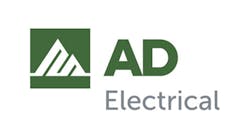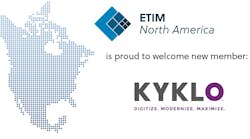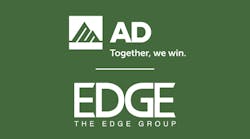Training looms larger than it ever has in the scope of the electrical distributor. There was a time when many distributors viewed training as a necessary hassle that added little or nothing to the bottom line. Training was basically limited to technical knowledge of the products, familiarity with the company's policies and procedures and some on-the-job instruction in how to drive a forklift, calculate a project takeoff and close a sale. Those days are long gone for most distributors.
In recent conversations, distributors throughout the country invariably cite development of their people as one of the most important challenges they face every day. They talk of the need to grow their company's knowledge base and cultivate the careers of their people through education. Many reasons exist for this seemingly sudden surge in the yearning for learning. Fundamentally, it's part of a growing understanding of what it takes to be an effective, competitive electrical distributor today.
Champions of training have captured distributors' attention, and their mission has gained urgency. "It's become the way we do business, and that's the success from our standpoint," John Teipen, director of training for Graybar Electric Co., St. Louis, Mo., says of his company's forays into the frontiers of corporate education. "Five years ago we were still out talking about why people should do training. Today, we just can't get it to our people fast enough."
Part of the change is a reaction to a very tight labor market. In most cities, competition for good, honest, energetic employees is as fierce as competition for paying customers, and the two are intimately related. A full warehouse and convenient location are important, of course, but succeeding in attracting and keeping good customers depends more than ever on your ability to attract, keep and motivate good employees.
The information technology revolution has added its own notes of urgency and opportunity into the mix. The market is flush with new efforts to apply the latest technology to training as entrepreneurs search for the right way to converge the day's most promising technologies with the business world's most urgent and universal needs. Virtual campuses and video-conference seminars and interactive multimedia learning events, as well as the flourishing of companies offering packaged training programs, give a distributor more options than ever before to rally people with good ideas and teach them useful skills.
Further fueling the trend is a rising interest in the role corporate training programs can play in education. Schools are turning to companies to support and augment academic training to help students bridge the gap between the skills and subjects learned in school and those they will really need to succeed in the business world.
Training programs certainly are important to new prospects choosing an employer, says Teipen of Graybar. "At the recruiting table, when we can show potential employees what we have in training - the structure of the program and the curriculum -it's actually a career advancement opportunity. They can see what the requirements or the skill sets are for future jobs. It certainly would attract me if I knew the organization was going to train me." Teipen has found that a growing number of prospects consider a strong corporate training program one of the minimum requirements in their selection of an employer.
A technologically advanced training program, moreover, helps to chase away the dreary images most newcomers to the job market have of traditional distribution. "On-line content - even though the basic purpose is the content, and on-line training makes it available and trackable and so easy to distribute - one of the advantages of it is there's a little glitz to it," Teipen says.
Graybar has put some substantial resources into building its educational capabilities. The center of Graybar's training universe is its Graybar Virtual Campus, an on-line education system available to all the company's 9,200-plus employees through Graybar's Intranet or the Internet. The virtual campus now offers more than 1,000 on-line courses, averaging around 60,000 courses served per month, Teipen says. The on-line courses are a mix of packaged courses purchased from outside vendors and proprietary courses developed by Graybar's corporate training staff.
The system was developed in conjunction with a company called VCampus Corp., based in Reston, Va. The content includes both "soft" courses such as how to deal with irate customers and advanced technical product training. Graybar has been developing and using on-line training for more than 10 years, Teipen says. Some vendors paid Graybar to develop courses specific to their products.
The selection of courses available on the virtual campus is designed to promote consistency throughout Graybar's 260-store chain. "If you start with the basic belief that we want our employees to be the best-trained in the industry, then how do we do that?" asks Teipen, rhetorically. "I think it starts with a good job description. What is this person supposed to do? What are their core competencies? What are the skill levels needed to really accomplish that job? That is probably a weakness for most organizations. You can call somebody a CSR (customer service representative) but what they do from branch to branch varies immensely. We use the job descriptions to develop a core curriculum." The goal is to ensure that a customer accustomed to Graybar's methods in Portland, Maine, will feel perfectly comfortable doing business with the branch in Portland, Ore.
Although the corporate office can standardize job descriptions, the flip side of the training coin - knowing the needs of individual employees - is outside their scope. Therefore each employee's branch manager has a role in developing the individual's personal training plan. Each employee has a unique training plan tailored to his or her specific needs and career goals. Many of the courses are contained entirely on-line; others involve classroom work. Every course of training begins and ends on the virtual campus system, which helps the company track employees' progress.
One of Teipen's goals is to be able to offer college credit for courses taken through Graybar's Virtual Campus. That prospect is part of a larger trend toward integrating corporate education programs into students' long-term training.
As the nation's educational systems grow more dependent on corporate education programs to offer specialized, industry-specific instruction, companies that step up to the education table get to have a hand in shaping the skills of tomorrow's recruits.
Springfield Electric Supply, Springfield, Ill., has begun working with local school districts to help students get the skills and knowledge they would need to succeed in the world of distribution. Pam Kovacevich, vice president of quality and training at Springfield, sits on the Industry Education Council of the National Education Foundation, the education arm of the National Association of Electrical Distributors. The council is working to develop curricula for community colleges to prepare students for work in the distribution industry. Kovacevich sees the programs as an opportunity to improve the skills of the next wave of new employees. "We've found that we limit our own pool (of potential employees) based on some of the qualifications that we're looking for, and we're looking at changing those qualifications," Kovacevich says. "We're starting to work more with local school districts, preparing them with curriculums for distribution, so when their students come to work for us, their training curve, from an industry-specific standpoint, already has a bit of helping hand, and they become productive faster."
Being able to offer courses for college credit gives a distributor even more influence in the development of potential employees. Never far from corporate education's cutting edge, Platt University, the education arm of Platt Electric Supply, Beaverton, Ore., has nine courses offering college credit, and more are being added monthly, says Gary Ewer, director of education and overseer of Platt University.
"There's no way that most colleges can address all the needs of business, and certainly not tweak it toward our language, our culture," Ewer says. "So our university exists to translate all the business terms into our language." Platt has gotten involved with Portland Community College and Clackamas Community College to offer courses such as "Performance Management" for college credits. Platt University has eight instructors on staff certified to teach college-level courses. The school pays a fee to the college for transcripts and credits.
"My goal is that you'll be able to go to Platt University some day and earn a college degree. You could earn a business degree," Ewer says.
In addition to its college credits, Platt University, established in 1988, offers employees, customers and vendors of Platt Electric Supply a vast array of educational resources. Platt University's 50-person volunteer staff develops some of the course content and buys others from various organizations including the American Management Association, New York, N.Y.; Carlson Learning Co., Minneapolis; Brainstorm Dynamics, Phoenix, Md.; and AchieveGlobal, Tampa, Fla.
The courses are delivered on-line via distance learning, over video-conference facilities, via printed workbooks and in live classroom settings in an attempt to appeal to people who respond to different kinds of instruction, Ewer says. There's even a "Highway U" audiotape course in which employees can listen to the instruction during their commute and complete the workbook over lunch.
The trainers at Platt University are top performers in their areas of expertise within the company, Ewer says. The school recruits the best salespeople and managers in the company, and trains them to be instructors. Trainers of people are considered the highest skill level in the company. "It's a big deal to teach," says Ewer. "You have to earn the right."
When looking for trainers and structuring curriculum, a good place to start is with job descriptions. At Eoff Electric in Salem, Ore., Elise Gainer's team has established core competency requirements for every position in the company. Each position has certain skills attached to it that every employee in that position is expected to know.
Eoff's current education campaign grew out of an employee survey that showed a need for more training. The company had been doing training for years but found it needed a more organized approach. Gainer, Eoff's director of training, organized the company's curricula into "pathways" that guide em ployees through a series of courses in a particular subject area. The pathways are self-paced, using a mix of outsourced and in-house courses. A tiered approach made more sense for the sales skills section because of the importance of selling in Eoff's operations, she said. Although the pathways are not mandatory and employees pick the courses they need, all employees are encouraged to complete the primary portion of the sales training, the Emerald level, Gainer says. Salespeople move on and complete the Ruby and Diamond levels, with awards and recognition accompanying the completion of each level.
It's important to tailor education to the needs of the individual. Trainers in any electrical distributorship need to be intimately familiar with the latest principles of adult learning, especially the theories on the various ways individuals learn. Some are readers, some tactile, some auditory, and some spatial in orientation, so it's important to mix a number of modes in any course.
Coursework should also be tailored to individual's training needs. Platt University developed a skills matrix to determine the training needed for each position in the company. Every job has a skill rating, and employees are pretested and post-tested around skills their work requires. "I can literally tell you the skills required for that job, I can tell you which person has those skills," Ewer says.
Just as important as building specific skills is the need to reinforce the basics of thinking and communicating, says Susan Levering, vice president of human resources for Branch Group, Upper Marlboro, Md. "People need to know how to think, they need to know how to problem-solve, they need to know how to communicate with other people - those things are ... absolutely essential."
One of the most important steps to getting the best return from your education investment is to measure the results, but measuring education can be difficult. Many companies use their annual performance review process to get a feel for the effectiveness of their efforts. Principles of "performance management," which stresses careful observation and the clear communication of educational goals can provide additional feedback.
A more elaborate feedback mechanism might look like Graybar's sales training program, the Graybar Professional Selling System. Based on the acronym GRAYBAR, Teipen and a team of five retired Graybar regional vice presidents, who returned to oversee sales training, broke the selling process down into seven segments and built a six-month training odyssey around it. The classroom work begins with a role-playing game inspired by "Mission Impossible" in which students receive a secret assignment to apply one of the seven principles to complete a difficult sale. Follow-up to the class includes an assignment to concentrate on the seven principles for 21 days each; at the end of each three-week period, the student writes a description of what he or she learned by applying that concept at work. The description is sent by e-mail to the instructor, who evaluates the responses. At the end of the six-month period, the class reconvenes and discusses what they learned with a little celebration and a reading of some of the better-written reports from the period. Teipen says the Professional Selling System has succeeded in driving home some important sales concepts that often elude employees.
Linking training into ISO 9000 can be a powerful way to keep the momentum going and help track each employee's progress, says Teipen. Graybar integrated training requirements into its written procedures required for ISO 9000 verification. "We say in our procedures that there will be a curriculum for each employee and they will accomplish it within a certain period of time, so our internal ISO auditors are watching for that."
If the effectiveness of training on changing employee behavior is a complicated thing to track, calculating a financial return on investment is nearly impossible. Of course, that doesn't stop distributors from trying.
"It's hard for distributors because they don't see a concrete return on investment when it comes to training, but their people are their investment, and if they don't invest wisely in continually training them, then they're only going to get so much results from people," says Gainer of Eoff. "If you don't give them the selling skills, they're going to do what they've always done, and they'll keep producing the same results. The only way you're going to get different results is if you put something else in there, which is the training."
The technological advances of distance learning and videoconferencing and so forth hold tremendous promise for the future of education. Trainers have to keep in mind, however, that information technology is merely a tool, with its own limitations and its own strengths.
"I have some mixed feelings about distance learning, more on the negative side than the positive," says Levering of Branch Group. "I still think face-to-face contact with your instructor and with your peers is still an important component to learning. I think too much of what I've seen of distance learning from an industry standpoint is simply taking self-study booklets and putting it on a computer. There's no reason for anyone to have to read on a computer screen or print out from a computer screen the same thing they could already get in print."
Technologies such as video-conferencing leave Levering equally nonplussed. "We have used some videoconference training, but that's very limited and very specific to technique because of the delays in the system, and you need the kind of people who know how to teach to that group watching on the screen as well as the people in front of you. That's a real skill not very many people have developed yet."
More important than education technology is the careful alignment of training programs with the company's overall strategic goals, says Levering, who in her time with Branch has been a pioneer in distributor training.
The overall direction and culture of the company should determine the focus of the training efforts, Levering says. "Learning and employee development can't be a separate function within the company. It must be integrated with the company's goals. What really has to happen is the next question: 'Will this help us achieve our goals?' If so then you should do it, and if the answer is, 'No, it's fun but it won't help the company achieve its goals,' then you should look for something else."
What will likely align nicely with just about every company's strategic goals is education's power to push an organization to new levels of excellence and become a new competitive advantage. "I think the one sustained competitive advantage in this whole industry is people. And we focus less on them sometimes. We're looking at trucks and computers. But give me people ... who are motivated, and look out. They'll run circles around everybody. They're our most valuable resource," says Ewer of Platt. "That's our advantage. It could be anybody's if they wanted it."
No distributor that hopes to remain in business can throw unlimited time and resources at training. But, how do you make sure you get the most from your training investment? The first step - a needs assessment - is one that's often overlooked, says Gary Ewer, director of education, Platt Electric Supply, Beaverton, Ore. Often companies create training solutions for problems that have nothing to do with training. "If you add up the lost time, lost productivity from people being in class for a day, we estimate it costs about $800 to have a person in here. When you add it up and put 50 people in place, you have to ask, 'Is the problem that big? Or could it be addressed in some other way?' I think that's the reason Platt University has been so successful over the years. We really evaluate what is the problem."
Platt uses the following seven-point test to work through a decision on whether to embark on any training excursion:
1. How will this training save money or reduce expenses? 2. How will this training increase sales or improve productivity? 3. How will this training improve or enhance internal or external customer relations? 4. Who are we trying to train, and what are their training needs? 5. What must the audience be able to do before they're considered ready for training? 6. What materials, equipment and personnel do you need? 7. What time, money or resource constraints do you have?








